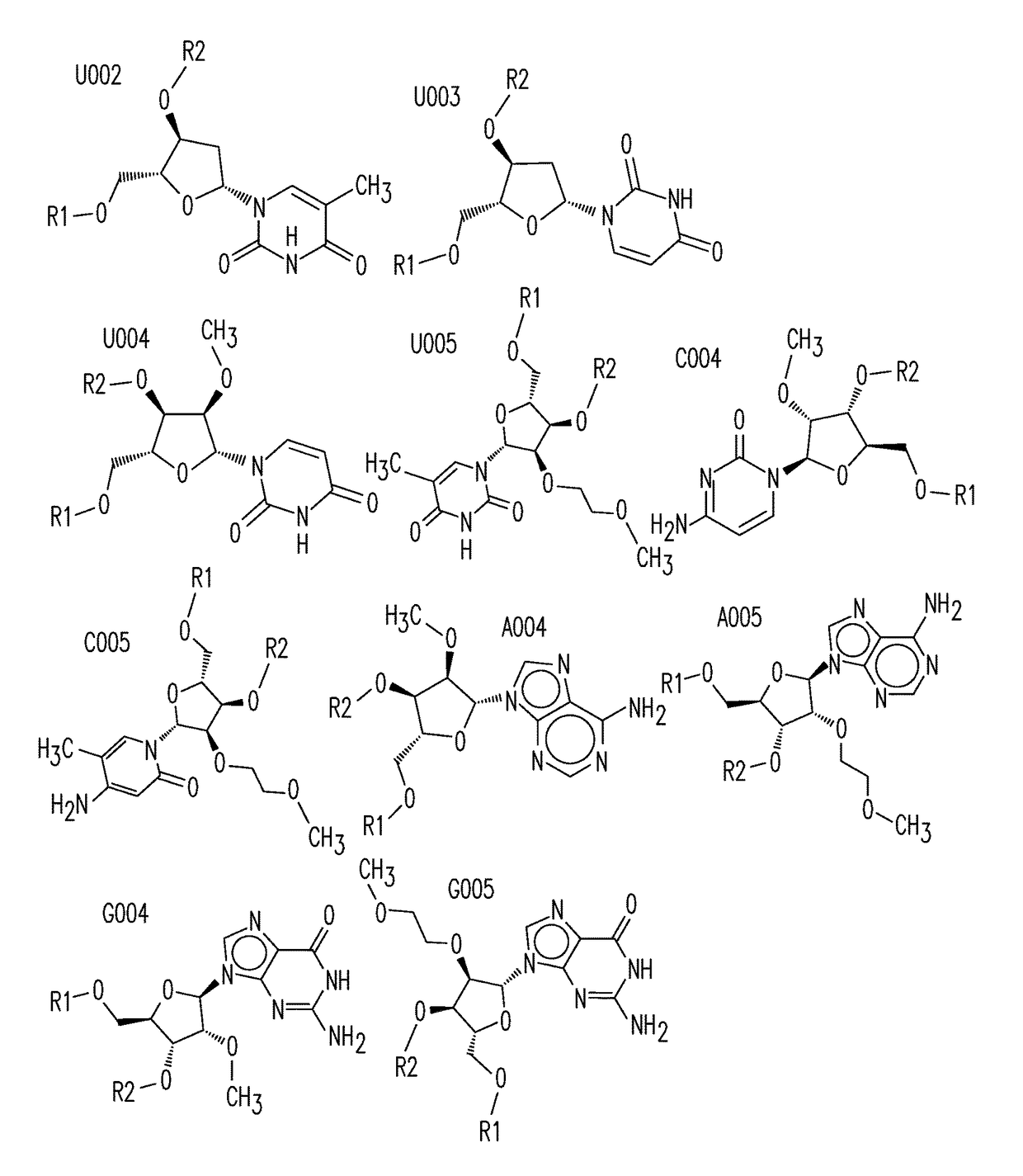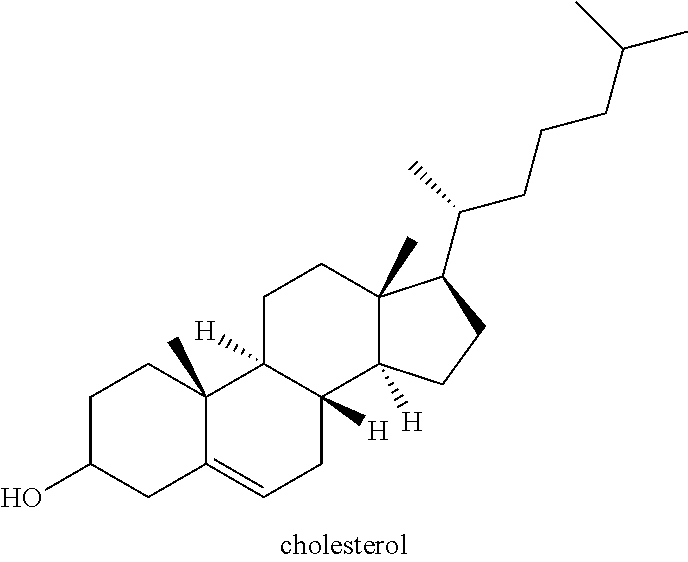Organic compositions to treat EPAS1-related diseases
a technology of organs and compositions, applied in the field of hif (hypoxia inducible factor) gene, can solve the problems of inhibiting reproductive abilities, affecting the function of epas1, affecting the epas1 gene, so as to reduce the level of epas1 mrna, prevent, treat, modulate, and reduce the effect of target epas1 rna
- Summary
- Abstract
- Description
- Claims
- Application Information
AI Technical Summary
Benefits of technology
Problems solved by technology
Method used
Image
Examples
example 1
Bioinformatics
[0618]Hundreds of RNAi agents (siRNAs) to EPAS1 were chosen based on several criteria. Some of the criteria (not all of which were met by all selected sequences) include: Human / Cyno cross reactivity; BioPred; siRNAs have U or A at nt 1 (although 2802 and 3739 start with a C); siRNAs exclude seed match to known human microRNA for AS strand; and sequences exclude repeats of 4 or more.
[0619]A selection of the most efficacious RNAi agents tested are disclosed herein, and their sequences presented in the Tables. Tables 2 and 3 below present the DNA sequences of the RNAi agents, and the unmodified RNA sequence.
[0620]The phrase “Start” denotes the starting position of the oligonucleotide (e.g., the 19-mer) on the transcript. This is measured in nucleotide coordinates, relative to beginning of the transcript.
[0621]
TABLE 2EPAS1 19-mers. DNA sequences.PositionSEQ IDSEQ IDNM_001430SenseNO:AntisenseNO:842ATGGCGACATGATCTTTCT1AGAAAGATCATGTCGCCAT202802AAATGTACCCAATGATAAG2CTTATCATTGGG...
example 2
Preparation of siRNAs
[0661]Small scale synthesis is used to prepare EPAS1 siRNAs; medium and large scale syntheses can also be used to prepare these siRNAs in larger quantities.
[0662]Small Scale Synthesis and Purification Methods for the Initial Screens (1 μmole Scale).
[0663]Small scale synthesis is used to generate siRNAs.
[0664]EPAS1 sequences are synthesized on MerMade 192 synthesizer (BioAutomation, Plano, Tex.) at 1 μmol scale.
[0665]In some experiments, for all the sequences in the list, ‘endolight’ chemistry is applied as detailed below: All pyrimidines (cytosine and uridine) in the sense strand contain 2′-O-Methyl bases (2′-O-Methyl C and 2′-O-Methyl U). In the antisense strand, pyrimidines adjacent to (towards 5′ position) ribo A nucleoside are replaced with their corresponding 2-O-Methyl nucleosides.
[0666]In some experiments, a two base dTdT extension at 3′ end of both sense and antisense sequences is introduced.
[0667]The sequence file is converted to a text file to make it ...
example 3
Example 3A
Methodology for In Vitro Screening
[0680]Cell Culture and Transfections
[0681]In some experiments, 786-O cells are grown to near confluence at 37° C. in an atmosphere of 5% CO2 in DMEM supplemented with 10% FBS, streptomycin, and glutamine before being released from the flask(s) by trypsinization. Reverse transfection is carried out by adding 15 μl of Opti-MEM / siRNA duplexes to 77.5 ul of Opti-MEM plus 2.5 μl of Lipofectamine RNAiMax per well (Invitrogen, Carlsbad Calif. cat #13778-150) into a 384-well plate and incubating at room temperature for 20 minutes. 15 ul of this complex is transferred to another 384 well plate. 2.0×103 786-O cells are then added. Cells are incubated for 48 hours prior to the addition of Bright-Glo to each well. Single point experiments use 6.5 nM final duplex concentration for 786-O cells for each of the EPAS1 siRNAs. A subset of siRNAs that showed robust silencing in the 6.5 nM screens are assayed over a range of concentrations from 10 nM to 0.000...
PUM
| Property | Measurement | Unit |
|---|---|---|
| temperature | aaaaa | aaaaa |
| length | aaaaa | aaaaa |
| size | aaaaa | aaaaa |
Abstract
Description
Claims
Application Information
 Login to View More
Login to View More - R&D
- Intellectual Property
- Life Sciences
- Materials
- Tech Scout
- Unparalleled Data Quality
- Higher Quality Content
- 60% Fewer Hallucinations
Browse by: Latest US Patents, China's latest patents, Technical Efficacy Thesaurus, Application Domain, Technology Topic, Popular Technical Reports.
© 2025 PatSnap. All rights reserved.Legal|Privacy policy|Modern Slavery Act Transparency Statement|Sitemap|About US| Contact US: help@patsnap.com



